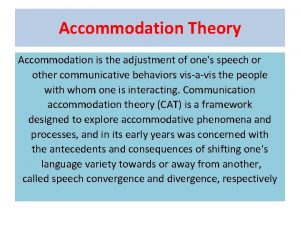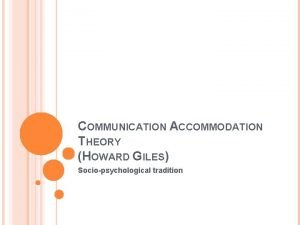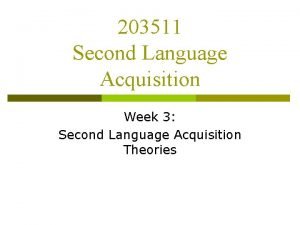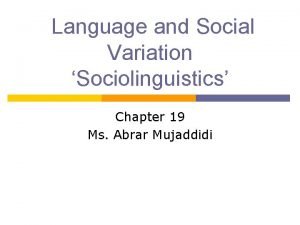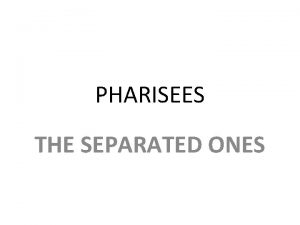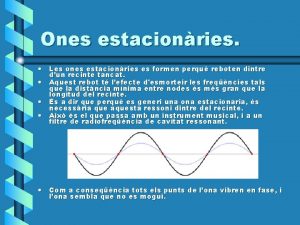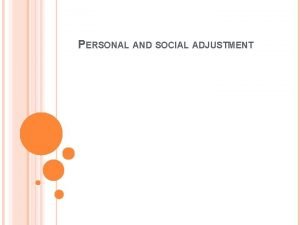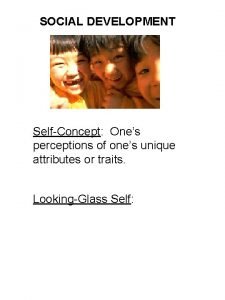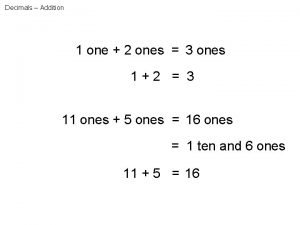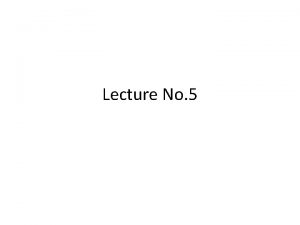Accommodation Theory Accommodation is the adjustment of ones








- Slides: 8

Accommodation Theory Accommodation is the adjustment of one's speech or other communicative behaviors vis-a-vis the people with whom one is interacting. Communication accommodation theory (CAT) is a framework designed to explore accommodative phenomena and processes, and in its early years was concerned with the antecedents and consequences of shifting one's language variety towards or away from another, called speech convergence and divergence, respectively

Accommodation Theory Whether verbal or nonverbal, some accommodative processes can have profound social implications. For instance, satisfaction with medical encounters and patients' willingness to comply with crucial medical regimes can be influenced by doctors' attempts to accommodate to patients' speech norms

Convergence "Convergence" has been defined as a strategy whereby individuals adapt to each other's communicative behaviors in terms of a wide range of linguisticprosodic-nonverbal features including speech rate, pausal phenomena and utterance length, phonological variants, smiling, gaze, and so on. "

Convergence Descriptively, convergence can be labeled: (although value-laden) 'upward' or 'downward' depending on the relative sociolinguistic status of the convergee. Upward convergence refers to a shift toward an agreeable prestigious variety and downward convergence refers to modifications toward more stigmatized or less socially valued forms in context. Adopting the prestigious dialect of an interviewer is an example of upward convergence, and shifting to street language in certain minority communities is an example of downward convergence.

Speech Convergence: Gains CAT proposes that speech convergence reflects a speaker's or a group's need (often non ـ conscious) for social integration or identification with another. It has been argued, and often found, that increasing behavioral similarity or reducing dissimilarities along communicative dimensions in social interaction is likely to increase speakers‘ perceived (a) attractiveness; (b) predictability and supportiveness; (c) level of interpersonal involvement; (d) intelligibility and comprehensibility; and (e) speakers' ability to gain their listeners' compliance.

How is convergence evaluated? 1 A variety of studies have found that speech convergence have been positively evaluated on certain dimensions, both cognitive and affective as in intelligibility & comprehensibility and attractiveness. the more effort in convergence a speaker was perceived by recipients to have made the more favorably that person was evaluated and the more these same listeners would converge back in return.

How is convergence evaluated? 2 CAT recognizes however, that convergence is not always evaluated favorably by recipients, or by bystanders, and such occasions would include those when the convergent act is (a) nonetheless a movement away from valued social norms (e. g. , converging to a nonstandard interviewer but in a formal job interview); (b) attributed with suspicious intent (e. g. , to Machiavellianism); (c) attributed by eavesdroppers as a betrayal of ingroup identity when the recipient is an 'outgroup' member (e. g. , children in class seen by their peers to adopt the teacher's language style when talking to him or her); and (d) at a magnitude and/or rate beyond which recipients feel are sociolinguistic optima.

Divergence refers to the ways in which speakers increase perceived dissimilarities of speech and nonverbal differences between themselves and others. Linguistic divergence, like convergence, can take many forms, both verbal and nonverbal. It is as a tactic used to maintain integrity, distance, or identity when misunderstanding is not even conceivably an issue.
